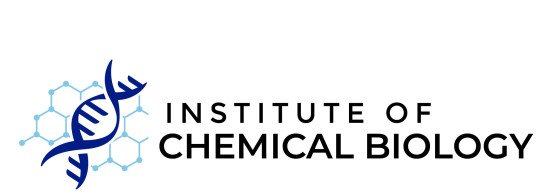BibTex format
@article{Ho:2009:10.1111/j.1742-4658.2009.07112.x,
author = {Ho, KK and Rosivatz, E and Gunn, RM and Smith, ME and Stavropoulou, AV and Rosivatz, E and Numbere, MG and Wong, JB and Lafitte, VG and Behrendt, JM and Myatt, SS and Hailes, HC and Woscholski, R and Lam, EW},
doi = {10.1111/j.1742-4658.2009.07112.x},
journal = {FEBS J.},
pages = {4037--4050},
title = {The novel molecule 2-[5-(2-chloroethyl)-2-acetoxy-benzyl]-4-(2-chloroethyl)-phenyl acetate inhibits phosphoinositide 3-kinase/Akt/mammalian target of rapamycin signalling through JNK activation in cancer cells},
url = {http://dx.doi.org/10.1111/j.1742-4658.2009.07112.x},
volume = {276},
year = {2009}
}
RIS format (EndNote, RefMan)
TY - JOUR
AB - Screening a compound library of compound 48/80 analogues, we identified 2-[5-(2-chloroethyl)-2-acetoxy-benzyl]-4-(2-chloroethyl)-phenyl acetate (E1) as a novel inhibitor of the phosphoinositide 3-kinase/Akt pathway. In order to determine the mechanism of action of E1, we analysed the effect of E1 on components of the phosphoinositide 3-kinase/Akt/mammalian target of rapamycin (mTOR) pathway. E1 demonstrated dose-dependent and time-dependent repression of Akt and mTOR activity in prostate and breast cancer cell lines, PC-3 and MCF-7, respectively. Inhibition of Akt and mTOR activity by E1 also coincided with increased c-Jun NH2-terminal kinase (JNK) phosphorylation. However, the mode of action of E1 is different from that of the mTOR inhibitor rapamycin. Proliferation and cell cycle analysis revealed that E1 induced cell cycle arrest and cell death in PC-3 and MCF-7 cells. Moreover, pretreatment of cancer cells with the JNK inhibitor SP600125 abolished the repression of Akt and mTOR activity by E1, indicating that the inhibition of Akt and mTOR by E1 is mediated through JNK activation. Consistently, E1 repressed Akt and mTOR activity in wild-type and p38-null mouse embryonic fibroblasts (MEFs), but not in MEFs lacking JNK1/2, and JNK-null MEFs were less sensitive to the antiproliferative effects of E1. We further showed that E1 can function cooperatively with suboptimal concentrations of paclitaxel to induce cell death in PC-3 and MCF-7 cells. Taken together, these data suggest that E1 induces cancer cell death through the JNK-dependent repression of Akt and mTOR activity and may provide a valuable compound for further development and research
AU - Ho,KK
AU - Rosivatz,E
AU - Gunn,RM
AU - Smith,ME
AU - Stavropoulou,AV
AU - Rosivatz,E
AU - Numbere,MG
AU - Wong,JB
AU - Lafitte,VG
AU - Behrendt,JM
AU - Myatt,SS
AU - Hailes,HC
AU - Woscholski,R
AU - Lam,EW
DO - 10.1111/j.1742-4658.2009.07112.x
EP - 4050
PY - 2009///
SP - 4037
TI - The novel molecule 2-[5-(2-chloroethyl)-2-acetoxy-benzyl]-4-(2-chloroethyl)-phenyl acetate inhibits phosphoinositide 3-kinase/Akt/mammalian target of rapamycin signalling through JNK activation in cancer cells
T2 - FEBS J.
UR - http://dx.doi.org/10.1111/j.1742-4658.2009.07112.x
UR - pm:19549188
VL - 276
ER -
